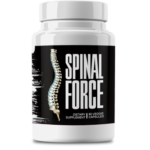This Village-Made Chinese Pain Reliever Eliminates Back And Joint Pain!
Joint Pain and Swelling: Warning Signs You Shouldn’t Ignore

Joint Pain and Swelling: What You Need to Know
If your joints ache or swell, you're not alone. Millions deal with this daily struggle, whether from aging, injuries, or health conditions. But here's the thing - brushing off that persistent discomfort could lead to bigger problems down the road. The good news? Understanding what's happening in your joints is the first step toward feeling better. Let's break down the causes, warning signs, and treatments that can help you move through life more comfortably.
Making Sense of Joint Pain and Swelling
Ever woken up with stiff knees or struggled to open a jar because your fingers hurt? That's joint pain talking. When swelling joins the party (think puffy knees or swollen ankles), it's often your body's way of saying something's not right. Sometimes it's just overuse, but other times it signals something more serious that needs attention.
Why Do Joints Act Up?
Your joints might be complaining for several reasons:
- Arthritis: The usual suspects - osteoarthritis from wear-and-tear or rheumatoid arthritis where your immune system gets confused
- Injuries: Remember that ankle sprain from last summer? It might still be talking to you
- Gout: That sudden, excruciating big toe pain? Could be uric acid crystals throwing a party
- Infections: Yes, joints can get infected too (and it's as unpleasant as it sounds)
- Bursitis/Tendinitis: When the cushions (bursae) or ropes (tendons) around your joints get irritated
Why Timing Matters
Here's the hard truth - waiting too long to address joint issues can lead to permanent damage. Catching problems early means better chances of managing symptoms and slowing things down. If your joints have been grumbling for weeks, it's not "just getting older" - it's your body asking for help.
Red Flags You Shouldn't Ignore
While occasional stiffness happens, these warning signs mean it's time to pay attention:
Pain That Won't Quit
If resting doesn't help and the ache sticks around for weeks, your joints might be trying to tell you something important. Chronic pain isn't a normal part of aging - it's a sign something needs checking.
The Red, Swollen, and Warm Trio
When a joint looks like it's blushing, feels hot, or puffs up like a balloon, that's inflammation waving a big red flag. If this comes on suddenly, don't wait - get it checked out.
Morning Stiffness That Overstays Its Welcome
If it takes more than 30 minutes to "loosen up" in the morning or you can't move a joint like you used to, your body might be dealing with more than just a bad night's sleep.
What's Really Going On?
Knowing the root cause helps target treatment. Here are the usual suspects:
The Arthritis Twins: OA and RA
Osteoarthritis (OA): The slow-and-steady joint wear that comes with time, often hitting knees and hips hardest.
Rheumatoid Arthritis (RA): Your immune system mistakenly attacks your joints, causing pain, swelling, and sometimes changes in joint shape.
Gout and Its Lookalike
Gout: Wakes you up at night with a big toe that feels like it's on fire (thanks, uric acid crystals).
Pseudogout: Similar drama, different culprit (calcium crystals), usually in knees or wrists.
Bursitis and Tendinitis
Bursitis: Those little fluid sacs cushioning your joints get angry and inflamed.
Tendinitis: The ropes connecting muscles to bones get irritated, often from repeating the same motions.
When to Call the Doctor
Some joint issues improve with home care, but these situations need professional help:
Pain Plus Fever
This combo could mean a joint infection, which needs immediate treatment to prevent serious damage.
Swelling That Appears Overnight
If your joint balloons up after an injury, you might be dealing with a fracture or torn ligament.
Joints Looking or Feeling "Off"
If a joint starts looking deformed or feels wobbly/unstable, it's definitely time for a professional opinion.
Getting to the Bottom of It
Doctors have several ways to figure out what's bothering your joints:
The Hands-On Approach
Your doctor will check how your joints move, look for swelling, and ask about your health history - so be ready to share.
Pictures of Your Insides
X-rays show bone damage, MRIs reveal soft tissue issues, and ultrasounds can spot inflammation.
Lab Detective Work
Blood tests can uncover inflammation markers, while joint fluid analysis checks for crystals or infection.
Finding Relief
Treatment depends on the cause but often combines several approaches:
Medication Options
- NSAIDs (like ibuprofen): The go-to for pain and inflammation
- Steroids: Heavy-duty inflammation fighters for bad flare-ups
- DMARDs (like methotrexate): Help slow down RA's progression
Movement as Medicine
Physical therapy and targeted exercises can strengthen the muscles around joints, helping them work better with less pain.
Daily Habits That Help
Losing extra weight takes pressure off joints, while eating more anti-inflammatory foods (think salmon and leafy greens) can calm things down.
Keeping Joints Happy Long-Term
Smart habits now can prevent problems later:
Weight Matters
Every extra pound puts four times more pressure on your knees - a great motivator to maintain a healthy weight.
Move Smart
Swimming, cycling, and yoga keep you active without pounding your joints.
Play It Safe
Use proper form during exercise, wear supportive shoes, and mix up your movements to avoid overuse injuries.
Wrapping Up
The Big Picture
- Joint issues can stem from many causes - don't ignore them
- Early action prevents worse problems later
- Treatment works best when it combines different approaches
Your Next Steps
If your joints have been talking to you, listen. Schedule that doctor's appointment you've been putting off, and start incorporating joint-friendly habits today. Your future self will thank you every time you move without pain!








